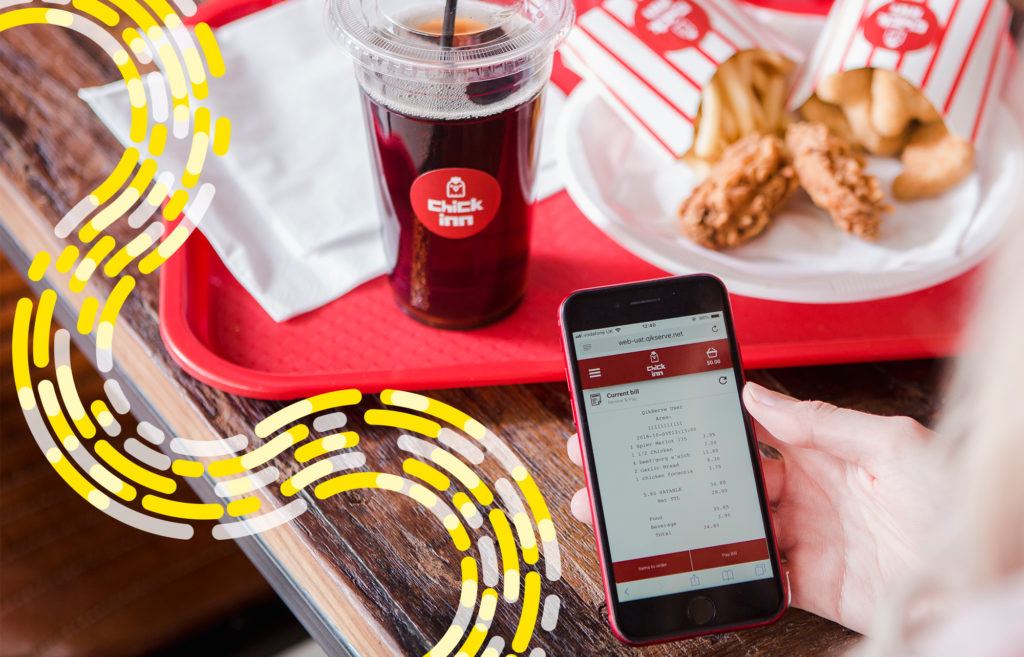For a company developing customer-facing software, the term “User Experience” (UX) is one of the most important in our vocabulary. But what does it mean, how does it work, and how does it ultimately make a difference to the hospitality operators that use our solutions?
Our in-house UX designer Blair took some time to shed some light on his design discipline.
“At its core, UX design is a human-centered way of designing products. By gaining an understanding of a business’s goals and its customers’ needs, you can create solutions that align the two.
Designing for the user experience involves getting to know your customers, understanding their needs and providing innovative solutions to their problems. UX design is involved at every stage of the product development lifecycle.”
It’s all in the process

“Initially, you have to do a lot of user research – that means getting underneath the skin of the problem and being able to gain real insight into what customers are actually doing. There’s often a gap between what customers say they do and how they actually behave. For example, in a survey, they might respond that ‘We do it this way’ to a certain process, while in practice they may do something completely different. By observing customers you can begin to see the differences between what they say and what they do.
Following on from a research phase, we take time to define the problem we are attempting to solve, then dive into sketching ideas and solutions. We’ll prototype, test and iterate the best ideas while gathering customer feedback to help refine the solution. We test our ideas and assumptions with customers early on to help make sure we are building the right product for our customers.”
What’s the difference between UI and UX design?
“User Interface (UI) and UX design are often talked about at the same time and are frequently misunderstood or confused, but they are actually separate design disciplines.
First, let’s be clear about what a UI is – it’s basically anything you use to interact with a product. In a car, for example, the UI for the driver includes the steering wheel, brake pedal, AC controller, entertainment system, speedometer and much more. The UI for digital products like apps, video games, and websites can take many forms, such as buttons for tapping or pictures that can be swiped through.
A UI designer is typically focused on enhancing the user’s visual experience – creating the visual language and elements that help users understand and use a product. They apply design principles such as branding, layout, color, typography, and design research and turn the content into an attractive and delightful experience.
UX is a design discipline with a focus on understanding how people behave. The key responsibilities for a UX designer can include customer and competitor analysis, user research, prototyping, testing and coordination with developers and UI designers. A UX designer’s role is to advocate for the user’s needs and balance the business goals.
Both roles are multi-faceted, broad and often overlap with each other, but they are both crucial to creating a great product experience.”
UX for both large and small business
“Designing for the user experience is an especially important consideration for large-scale, enterprise businesses, who need to ensure a joined-up, omnichannel experience. Any touchpoint on a customer’s journey using your product or service needs to feel joined up and seamless for the user, whether it’s an order-ready board, kiosk or mobile app.
Achieving this requires a holistic understanding of your service and your customers to create a journey that is consistent and familiar across all channels for any customer. For example, a customer starts ordering their burger meal on an order-ahead app then decides to add a dessert to their order using an in-store kiosk.
UX design can play a key role in helping differentiate your brand and product, especially for smaller businesses. Using a customer-centric design approach and offering solutions to the specific problems your customers face will give them something that they really care about and is where you’ll see real results.”
Getting it wrong, getting it right
“Part of the UX design process means getting it wrong. Design and product development is nothing if not a journey of iterations, failing and learning about how something could be done better.
We’ve all experienced apps or websites where we’ve been frustrated by something that doesn’t work how we expect it to. The role of a UX designer is to battle those poor experiences and help create better ones through continual learning and iterative improvement of a product.
Whenever you use a product that seems particularly intuitive or simple and easy to use, it’s likely a UX designer and development team have spent hundreds of hours experimenting and testing to create the best experience. All of this hard work is unseen to the user but, if done right, will deliver a great product experience that people will love.”





